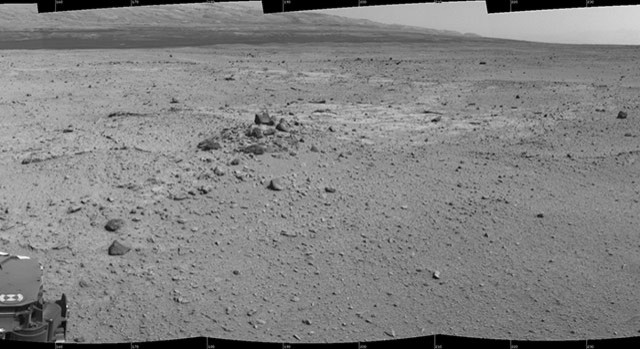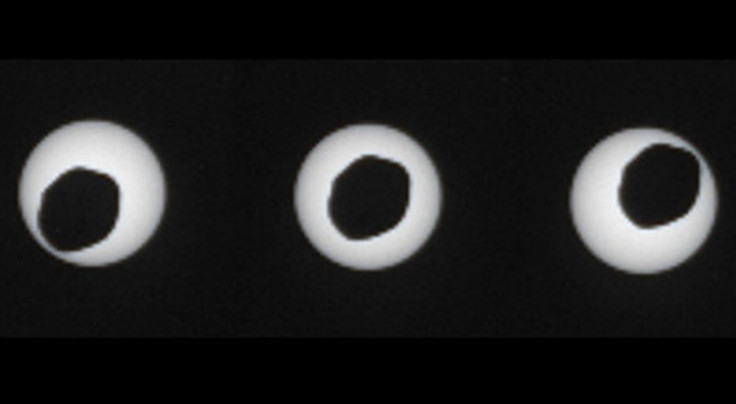NASA's Mars Rover Curiosity Takes First Solo Drive Using Autonomous Navigation

After a year traveling the terrain of Mars, NASA's curiosity rover has taken its first solo drive across the red planet.
Using its autonomous navigation system, the rover successfully traveled through a small dip on Tuesday, reports USA Today. The rover completed the feat by analyzing photographs which helped it decide the safest route to get to its endpoint, said the rover's team.
Curiosity drove solo over the terrain for about 33 feet of Tuesday's 141-foot journey. These instances of "autonav" use will increase as the rover continues its rip to Mars' Mount Sharp. The 3-mile-high mountain remains over 4 miles away.
In a statement on the trip, NASA rover mobility engineer Mark Maimone broke down the rover's ability to successfully navigate the planet's terrain.
"Curiosity takes several sets of stereo pairs of images, and the rover's computer processes that information to map any geometric hazard or rough terrain. The rover considers all the paths it could take to get to the designated endpoint for the drive and chooses the best one."

On Aug. 17, the rover also completed another commendable accomplishment. It snapped the sharpest images ever seen of a solar eclipse as viewed from Mars, reports Space.com. The pictures were taken with the rover's telephoto lens as Mars' larger moon, Phobos, blocked much of the sun. The event was considered an annular eclipse since Phobos didn't completely cover the sun.
Curiosity has traveled a little over a mile since it landed on Mars on Aug. 5, 2012.
© Copyright IBTimes 2024. All rights reserved.





















